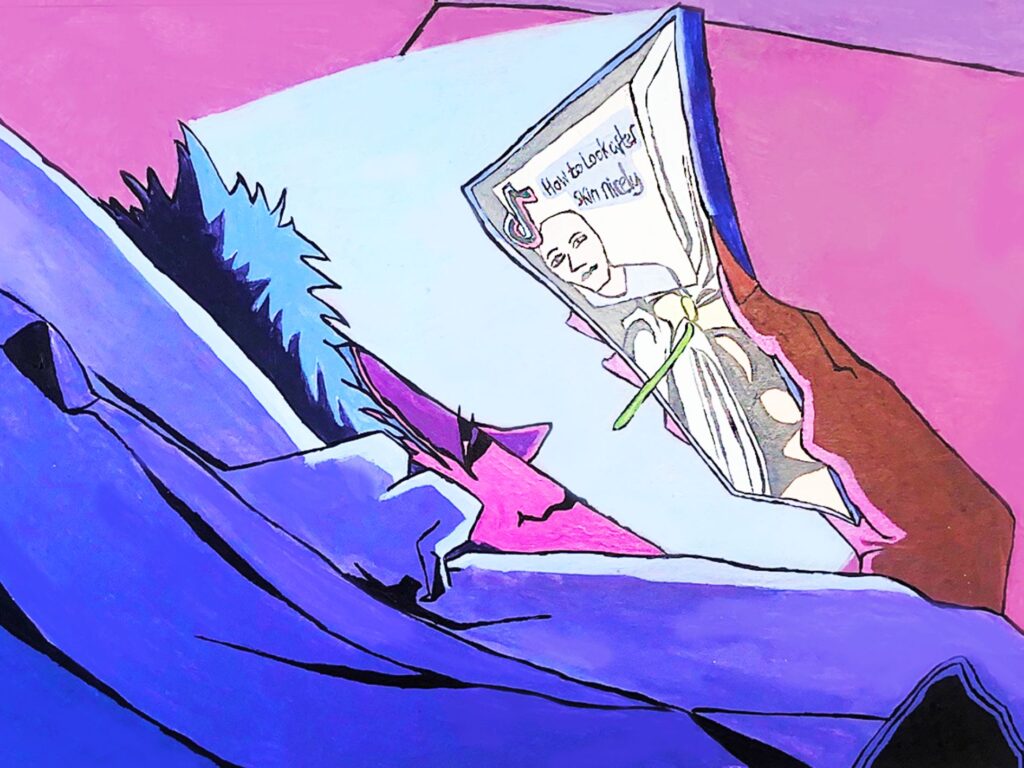There are many ways to unwind after a long and busy day. Some opt for a glass of wine, some run themselves a bath. But an ever-expanding internet phenomenon has been the choice for many people to numb their brains before they drift off to sleep – pimple and pore extraction videos.
Starting roughly in 2015 by Dr. Sandra Lee (AKA Dr. Pimple Popper), this unlikely hero of the self-care and night-time routine has been a growing trend. Dr. Lee popularised it by uploading videos of extracting cysts, blackheads and pores at her practice in California, which led to her signing a contract for her own TLC show in 2018. Her most viral video has 76m views, where she extracted a blackhead the size of a chickpea from an 85-year-old woman’s back.
Since then, many amateur content creators and other dermatologists have started to dig beneath the surface to capture the best oozing cysts and blackheads being stripped from oily noses. This was especially popular during the height of the pandemic, when distraction was vital to quarantine mental health. The popaholic community, like a bad spot, never seems to go away.
But why do people continue to find comfort in these videos? Or is it the shock value that most are seeking?
Satisfaction and relaxation
By day, Devon Martinez works in marketing for the US military, but away from his government job he creates pore strip and suction videos for his subscribers. His most popular video is of him removing pore strips from his face, which gained 3.3m views.
“It feels good to have something taken care of. They don’t have to experience it first-hand, but they can see it happen to someone else. I think unconsciously they empathise with it; it’s a layer of vulnerability taken away.”
Devon has been running his YouTube channel for eight years, but it wasn’t until three years ago that he bought a pore strip on a whim and decided to film it. “It feels good to have something taken care of,” he says. “They don’t have to experience it first-hand, but they can see it happen to someone else. I think unconsciously they empathise with it; it’s a layer of vulnerability taken away”.
Devon tries to make his videos as relaxing as possible. “The whole premise is: let’s get some nice music, let’s have a really nice aesthetic, let’s have a calm person talking, and make it look like looking after your skin is a beautiful experience,” he says.
By analysing their comments, social semiotics professor Annabelle Mooney from Roehampton University found the majority of viewers watched pimple popping videos for satisfaction and relief. “In the comments that I was looking at, quite a few people would say, ‘I watch these before I go to bed to calm down’,” says Annabelle. “It’s a soporific thing. They’d say ‘they make me sleepy’, or ‘they calm me down and then I can drift off to sleep’.”
Morbid curiosity
Have you ever watched a scary movie and been shocked and repulsed by what you saw? Yet you couldn’t seem to look away? This is called morbid curiosity and it manifests itself in pimple popping watchers.
While Annabelle doesn’t believe this is the main focus for the majority of viewers, a small number love to see large cysts burst with a scalpel and dilated pores being squeezed within an inch of its life. This is where these thrill seekers are most satisfied. She says most of the commenters in her research find themselves surprised when they click on a more shocking video, almost as if to test themselves to see how much they can bear. “There’s pleasure in the disgust rather than just being grossed out by it. What you see is a whole bunch of people saying, ‘how on earth did I end up here?’.”
Devon is also astonished at what his community finds enjoyable. “I remember looking at this piece of content and asking ‘why do people even like this? Why would they even watch it?’,” he says. “It’s very raw and candid; there’s no pretty way to produce it. At the end of the day people are watching you pull stuff out of your nose.”
A new type of medical dramas?
The unprecedented success of Dr. Pimple Popper has allowed other dermatologists to rise to internet fame by creating more hardcore content for viewing pleasure. Dr Dustin Portela, a dermatologist from Idaho, has over 2.4m followers on TikTok. He brings a new perspective to amateur pimple popping videos by medically explaining what’s happening in graphic videos. This is where his popularity lies. While he originally joined the app to spread factual information on how to look after your skin properly, his most popular videos are when he is giving commentary on medical equipment.
Annabelle explains that many viewers enjoy seeing pimple videos being framed as a surgical operation, using medical tools to cut the body open without exposing blood. “The cleanliness and the sterile conditions can counteract the disgust or the porousness that we might associate with bodily fluids. The grossness can be contained,” she says.
Whatever type of viewer you are – the humble pore strip watcher or the large cyst-popping junkies – you may be wondering if you’re abnormal for watching these videos. Millions of views across countless platforms will tell you there is a large popaholic community out there. It’s not a bad phenomenon either. If Photoshop and filters are the norms on social media, watching an oozing pimple burst is a great break from staring at perfect faces.
Illustration: Josephine Battye
You may also like
-
Meet the Hollywood makeup artists embracing the teenage breakout
-
Black, nasty, mad fat: why is there still no space for dark-skinned female rappers?
-
In the spotlight: three drag performers painting their identities through makeup
-
How anti-Asian hate inspired a skincare brand
-
Shedding light on dark skin in photography

